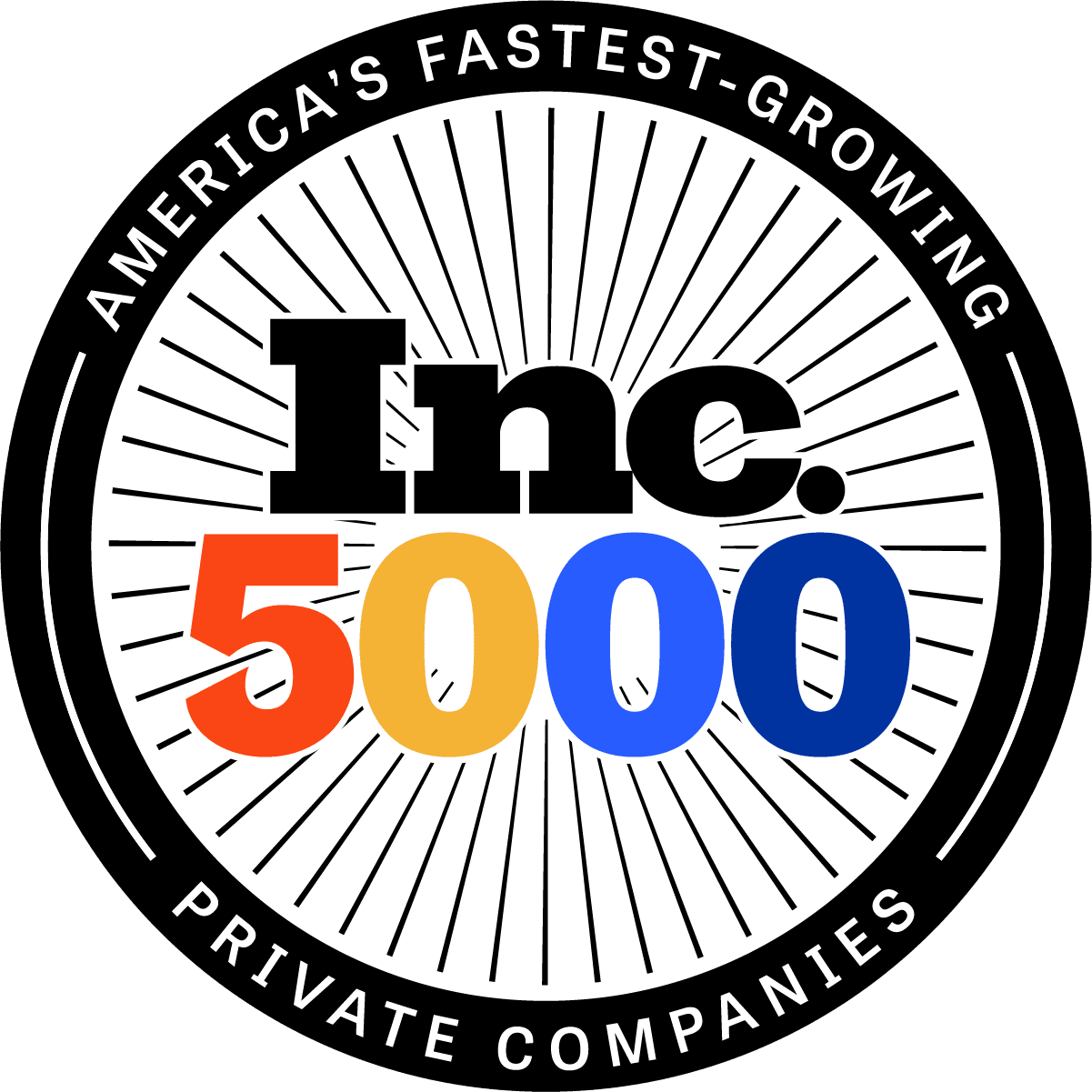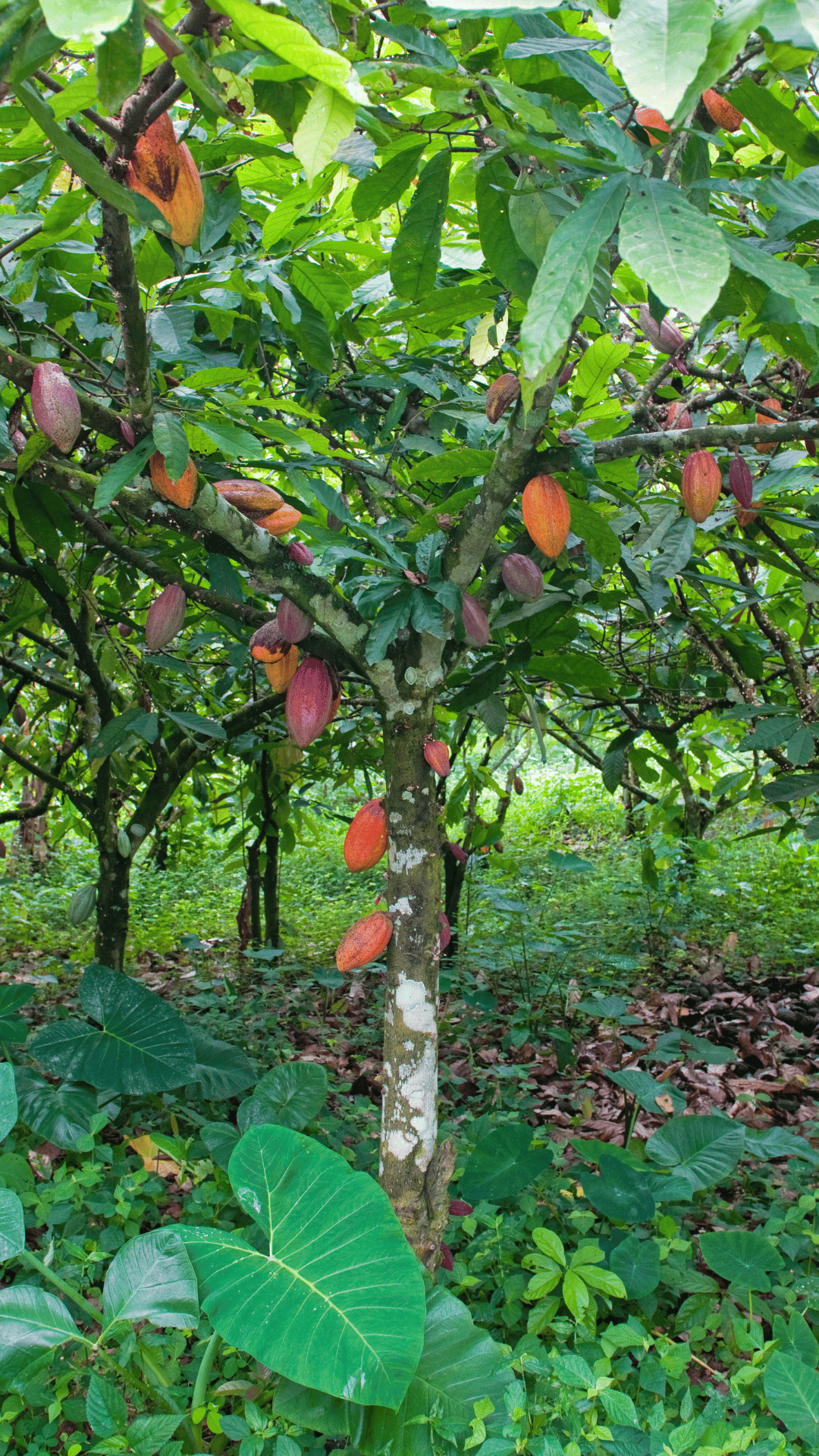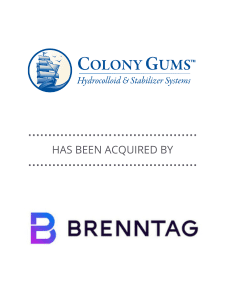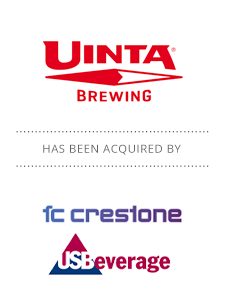Food and Beverage
TABLE OF CONTENTS:
- CH. 1: Introduction
- CH. 2: Market Overview & Trends
- CH. 3: Key Players in the Food and Beverage Market
- CH. 4: Recent Deal Flow and Multiples
- CH. 5: Factors that Drive Food and Beverage Business Owners to Pursue an M&A Transaction
- CH. 6: What Buyers Look for in an Food and Beverage Target Business
- CH. 7: What to Consider Before Selling Your Food and Beverage Business
- CH. 8: How to Raise Capital for Your Food and Beverage Business
- CH: 9: Key Considerations for Growing Your Food and Beverage Business Through Acquisition
Chapter 1
Introduction to the Food and Beverage Sector
The global food and beverages market reached an estimated $7.22 trillion in 2023 and is projected to grow at a compound annual growth rate (CAGR) of 6.3% through 2027. Many consumer trends provide strong tailwinds for a sector that fuels both developing and emerging economies, which continues to hold attention of buyers across the globe.
If you own a successful food or beverage business, you might wonder whether it’s a good time to sell or recapitalize your business and what to consider before taking your company to market. We can help.
In this guide to food and beverage M&A, we explore the trends driving growth and the reasons investors are attracted to this sector. The guide also reviews recent deal activity and the most active buyers, explains what buyers look for in a target in this sector, and what to consider before selling your company. The guide closes with guidance on securing capital and explains why Forbes is the partner that can help you achieve an optimal outcome.
The global food and beverages market reached an estimated $7.22 trillion in 2023 and is projected to grow at a compound annual growth rate (CAGR) of 6.3% through 2027.
Chapter 2
Market Overview & Trends
The food and beverage sector is massive, spanning the entire supply chain. This sector encompasses two broad categories:
- Harvesters grow and/or harvest inputs like agricultural commodities (such as meat, cocoa, or produce)
- Processors convert these commodities into specialty ingredients (such as flavors, fragrances, and textures), further processed goods such as steaks or cheese, or finished goods, such as doughnuts or a protein bar. These products are then sold to:
- Distributors/brokers acting as logistics managers, managing distribution to end customers
- Brands, who often focus on creating a compelling product portfolio and marketing strategy to drive sales (although they can, and often do, manufacture product) This sector is incredibly broad, with more than a dozen subsectors, all with unique business models. For example, the produce and meat subsectors tend to involve minimal processing, while categories like cakes and frozen meals require much more effort to create consumer-ready products.
Consumer trends constantly force this sector to evolve, creating a dynamic market.
- Continued focus on health. Since the mid-2000s, Americans have consistently grown their focus on healthy eating, with interest reaching an all-time high in recent years. This on display regularly, with brands offering low/no sugar options or investing in healthier products (like Coke’s investments in ZICO, Odwalla, Suja Life, and more)
- Entrepreneurs are taking over this category, reinventing familiar classics with healthier options, like Goodles, Poppi, and countless others
- Targeted functionality. While the general market focuses on healthy options, industry thought leaders see the opportunity in and are pioneering products that provide specific benefits, such as gut health (Poppi’s prebiotics), stress reduction (Perfy’s ashwaganha), and enhanced focus (Four Sigmatic’s various mushrooms).
- Heightened focus on well-being. Three out of four believe food and beverages have a moderate or significant impact on mental and emotional well-being. That encourages consumers to seek products with ingredients that reduce stress, promote sleep, or enhance mood, like mushroom-based tea and coffee alternatives.
- Demand for sustainability. Many consumers favor food and beverage products packaged in recycled materials, leading brands to seek out or invest in packaging partners that have expertise in this domain
- Transparent labeling. Consumers want to understand their products and are tired of ingredients they can’t pronounce and don’t understand, such as disodium inosinate, disodium guanylate, and more. Companies that can shorten their labels and use recognizable, healthy products are able to gain far more traction than those that don’t
- Interest in plant-based alternatives. While this category has faced challenges due to low profitability, overcrowding, and consumer backlash to ingredients like methylcellulose, the category is large and growing, with plant-based meats alone projected to reach $25 billion by 2030, and plant-based milks continuing to see adoption due to health and environmental concerns
- The staying power of treats. Healthy offerings aren’t the only ones winning – whether it’s salty or sweet, the treat category continues to innovate and grow as evidenced by the popularity of snacks like Goldfish (a $1 billion brand), the success of Mid-Day Squares, or the launch FFUPS corn puffs (marketed as “not a better-for-you alternative”). For snacks, convenience and decadence often outweighs health considerations.
But while the sector is enjoying the benefit of consumer trend tailwinds, it’s not without its challenges. Food and beverage business owners regularly grapple with obstacles such as:
- Cost and price inflation. As labor, equipment, ingredient, and other costs rise, producers are passing along higher expenses to customers to the degree they can (which can vary substantially by industry and customer) but are also finding creative solutions, such as adjusting quantities improving efficiency, finding alternative suppliers or production approaches, or instituting other cost-cutting measures.
- Supply chain issues. Adapting a food portfolio to include healthier options creates supply chain challenges—from ensuring input availability to ensuring shelf life for products like dairy alternatives. Post-COVID disruptions, such as freight pricing/availability, weather events (like we’re seeing in the cocoa sector), and more continue to force operators to actively manage their supply chain. Key Example: In recent years, locust beans have experienced severe shortages due to drought and conflict, forcing ice cream makers to adapt when prices increased tenfold or were simply unavailable.
- Labor shortages. From production floor workers to skilled specialists like butchers, staying fully staffed is a challenge for any food or beverage company, making it difficult to scale the business.
Despite such obstacles, new brands keep springing up, aided by easy access to co-manufacturers willing to bring their concept to life and abundant capital to scale a business. While the funding frenzy fizzled by year-end 2022, entrepreneurs with an idea that taps into a hot consumer trend continue to emerge and attract funding.
This highly fragmented and competitive market is ripe for consolidation, spurring significant M&A activity. Customer affinity for local and regional brands is just one factor, creating a proliferation of brands that find themselves on investors’ radars for a variety of reasons: Perhaps they have strong brand recognition, or they’re on a solid growth trajectory, or they’re struggling to scale and can be acquired inexpensively.
On the food manufacturing side, many owners are nearing retirement and eager to exit, drawing investor attention. Whether the contract manufacturer is already doing well securing business from successful brands, or the business is lagging because it hasn’t invested to keep up with new trends, buyers may see an opportunity for large gains.
Regardless of the business type, investors are drawn to companies with on-trend products or capabilities and stable, consistent cash flows. With dry powder at all-time highs, both strategic acquirers and private equity (PE) groups find the sector appealing.
Ready to Discuss Selling Your Food and Beverage Business?
Chapter 3
Key Players in the Food and Beverage Market
With both strategic and financial buyers interested in the sector, its critical to understand what drives their interest. Strategics are attracted to businesses that offer capabilities they can’t easily or quickly replicate, which offer a competitive advantage or allow them to operate further up the value chain. They also seek companies large enough to move the needle significantly, making the “buy vs build” decision easier. If buying a key capability today enables them to become a market leader tomorrow, they’ll seize the opportunity.
Active strategic acquirers in this sector include manufacturers of some of the world’s leading brands. Recent food and beverage deals completed by strategic acquirers include:
- Brenntag’s acquisition of Colony Gums, a leading provider of stabilizer blends, blending solutions, and hydrocolloids
- Campbell’s acquisition of Sovos Brands in a deal valued at $2.7 billion, netting a portfolio of pasta sauces, dry pasta, soups, frozen foods, and yogurts
- Utz Brands’ agreement to sell certain of its brands (including R.W. Garcia and Good Health) and three manufacturing facilities to Our Home for $182.5 million
- ADM’s acquisitions of Revela Foods (developer and manufacturer of dairy flavor ingredients and solutions) and Fuerst Day Lawson (an ingredient solutions provider and portfolio company of Highlander Partners)
Financial buyers like PE groups increasingly value contract manufacturers and ingredient suppliers for their consistent revenues and ability to grow regardless of which brand is popular with consumers. Furthermore, those that have deep relationships with major customers relying on them for R&D and production are highly attractive given the entrenched relationships with low risk of customer loss. PE groups also appreciate that contract manufacturers know the nuances of production and can efficiently pull levers like efficiency, capacity, and supply chain to optimize costs. On the branded side, financial buyers like that brands can scale up fast through effective marketing and by allocating production across multiple manufacturers.
Recent deals among active financial buyers in this sector include:
- Swander Pace Capital’s acquisition of Boulangerie St-Methode, a Quebec-based supplier of fresh bread products
- H.I.G. Capital’s acquisition of Patriot Pickle (manufacturer and distributor of fresh pickles and other fermented foods) from Swander Pace Capital
- Bansk Group’s acquisition of No Man’s Land Foods, a meat snacks brand sold mostly through the convenience channel
Ready to Talk to an Expert?
Chapter 4
Recent Deal Flow and Multiples
M&A activity in the food and beverage sector declined about 16% from 2022 to 2023 due to high interest rates and macroeconomic volatility, but deal activity is up long term—increasing 20% since 2015. The M&A landscape in this sector is constantly shifting, with different subsectors experiencing different value profiles.
For example, produce processing and distribution companies used to expect multiples in the mid-to-high single digits due to low margins, health safety risks, and perishable inventory. With investors seeing opportunities to consolidate a fragmented subsector, EBITDA (earnings before interest, taxes, depreciation, and amortization) multiples can now reach into the low double digits. To further highlight the variation, specialty ingredient companies have historically been highly valued — often trading as high as 20x — while protein processing businesses typically trade in the 6x-9x range.
Multiples also vary widely for branded vs private label or co-manufacturing companies.
- Prior to 2022, investors were hot on brands. And they were willing to pay a premium for them—often in the high teens for EBITDA or upwards of 5x revenue.
- Now, the branded space is more crowded. Buyers have shifted focus to co-manufacturers, looking to ride the coattails of the winning brands without having to pick those winners.
- Co-manufacturers are in demand. They often trade at EBITDA multiples starting in the low teens. Those with a diversified customer base, significant available capacity, and proprietary intellectual property (IP) command the highest valuations, which can range into the high teens and low 20s. In contrast, branded companies without significant differentiation have seen EBITDA multiples fall to the high single digits to low teens. Those that own their unique formulations and have some degree of control over processing skew to the higher end
Chapter 5
Factors that Drive Food and Beverage Owners to Pursue an M&A Transaction
Many factors can impact a food and beverage business owner’s decision to sell the company they’ve spent time and energy to build. While every situation is different, the following factors often drive an owner to take the company to market.
Age and health
Older founders or those with failing health will begin to seek an exit strategy soon. While newer branded entrants are often founded by younger professionals, contract manufacturers are often led by older owners who’ve leveraged their expertise to establish a business over time. For the brands and business run by younger entrepreneurs, these individuals usually raise capital, grow the business fast, and are ready to use the sale proceeds to fund their next idea.
The popularity of the food and beverage category.
Owners of companies in on-trend categories like functional foods and healthy alternatives will find their businesses in high demand and could receive unsolicited in-bound inquiries.
Hitting a plateau.
A company owner might recognize it will take significant time and capital, or an infusion of different expertise, to further grow the business. Owners who’ve devoted years and much capital to get the business to its current state might not have the appetite to take it further.
Lack of a succession plan.
In this fragmented sector, even some well-known brands that sport grocery store shelf space are smaller, family-owned businesses. It’s common for these companies to lack a formal succession plan or have children uninterested in taking over, leading them to seek an external buyer.
Labor shortages.
For manufacturers in particular, a lack of skilled labor can make it tough to meet current demand, let alone grow the business. Faced with these persistent struggles, the owner might decide it’s time to turn the reins over to someone else.
Less long-term vested interest.
An owner of a recently formed brand might be more inclined to sell in a hot market than a founder who’s spent years getting the concept off the ground.
Chapter 6
What Buyers Look for in a Food and Beverage Target Business
Buyers across all industries share some similar criteria when evaluating a target company. The business’s financial health—including its revenue quality and profitability trend—is always a key consideration, along with the company’s market position.
Aside from financial health, key considerations for both strategic and financial buyers include:
Innovation.
Buyers seek contract food manufacturers with innovative formulations or compounds that provide a competitive edge. The more complex and creative those capabilities, the more difficult it will be for customers to switch providers.
Capacity.
Buyers look for opportunities to add value that translates to a premium sale price or increased growth, without investing significant sums. A contract manufacturer that’s already operating efficiently and equipped with the capacity to handle more volume makes an attractive target.
Distribution channels.
PE groups in particular seek to scale an acquired business fast. For branded businesses in this sector, a multichannel distribution strategy is often key to achieving that goal. Financial investors tend to favor brands that have a strong distribution strategy in place but could benefit from greater investment in new channels (such as an online-only company entering the retail space).
Product line breadth.
The desire to expand an existing product line is often the primary driver when a strategic targets a food or beverage company. Large strategics often have strong retail connections but lack the comprehensive product line they need to capitalize on consumer trends and compete effectively. Adding the right products could open opportunities with a whole new customer segment.
Operational capabilities.
Some strategic buyers view an acquisition as an opportunity to augment existing operations faster and more efficiently than building those capabilities from the ground up. A company with state-of-the-art production facilities or innovative technology might prove a strong addition.
Improvement opportunities.
While buyers are attracted to operationally stable businesses, they also look for companies they can capture synergies with. If they see an opportunity to improve efficiency or otherwise enhance the operation with a reasonable level of investment, the business will be more appealing.
Chapter 7
What to Consider Before Selling Your Food or Beverage Business
Before you sell your company, you need to be certain the business is in prime position to secure an optimal deal and achieve your personal and professional goals. Considerations like these should be part of the decision-making process.
Is your financial house in order?
Your reporting systems should enable you to produce investor-ready financial statements and demonstrate the key performance indicators (KPIs) buyers will want to assess, such as sales and gross margin by product, inventory turnover rate, labor cost percentage, waste, and customer acquisition cost, for example.
Do you have the right team in place?
If you prefer to exit the business soon after the deal closes, you’ll need a capable team that has the buyer’s confidence or can at least lead the transition until a long-term team is found. Before taking the company to market, begin strengthening your team across key functions like production, finance, sourcing, sales, and others.
Are your key employees incentivized to stay?
Most buyers look for measures that keep key personnel on board after the deal closes to avoid losing institutional knowledge and expertise. If you don’t have employment contracts with essential staff, now is the time to get them in place. Likewise, if you’ve always intended to offer equity to a senior executive, formalize that arrangement before you begin talking with buyers.
How concentrated are your customers and vendors?
The more revenue you derive from a few customers, the greater your revenue risk. And if you’re heavily reliant on one or two vendors, you’re exposing your supply chain to risk. Both situations can cause buyers to devalue your business. While there is no simple or fast fix, it’s important to diversify your customer and vendor base to the degree you can in the short term, through steps like offering sales incentives or actively evaluating alternative suppliers.
Do you have the capacity to grow?
Buyers seek food and beverage manufacturers that can support growth without a major infusion of capital. If your equipment is outdated or you’re at maximum capacity, the investment needed to modernize and build out the business might turn buyers away.
Do you have long-term customer contracts?
Manufacturers can capture buyers’ attention with long-term contracts that provide greater assurance of a predictable revenue stream. Ensure all your contracts are currently in effect and easy to access.
Have you protected your intellectual property (IP)?
For food and beverage companies that own unique formulations—such as ingredients businesses—securing that IP properly (such as through contracts or terms and conditions) gives the buyer greater confidence on two fronts: They’re less likely to face IP-related legal challenges and they can expect more predictable revenue, since it will be more difficult for customers to leave.
Is your branding up to par?
Buyers expect a branded company’s website to be professional and the brand to be well-recognized and well-regarded. If your brand look-and-feel is dated, spruce it up before going to market. If your social media engagement is lacking, take steps to boost your social presence and share of voice.
Ready to Discuss Selling Your Food and Beverage Business?
Chapter 8
How to Raise Capital for Your Food and Beverage Business
Even if you’re not ready to sell your food or beverage business, you might want to raise capital to fund growth initiatives, update aging equipment, upgrade technology, bring on more talent, or gain liquidity to diversity your holdings.
Capital primarily takes the form of debt or equity, each offering pros and cons.
Debt capital typically involves bank loans or corporate bonds but can also include mezzanine financing. Business owners might use debt to fund short-term needs or projects requiring only limited capital, such as increasing working capital or investing in new manufacturing equipment. Owners of financially stable companies usually find debt is fast and straightforward to obtain and provides tax advantages, but it can prove costly when interest rates are high. Using debt (instead of giving up equity to an investor) also allows you to keep more control of the company. A lender will require you to demonstrate your current and projected cash flows can service the debt, and you’ll need to meet lender-specified covenants.
Equity capital requires you to provide an investor with minority ownership of the business in exchange for capital. Businesses often use equity capital to fund larger or more long-term initiatives, such as building a new processing facility. When you accept equity capital, you lose some control of the business and dilute your ownership position, however, diluting ownership spreads your risk, which you might find advantageous.
Aside from these general considerations, other factors influence the debt vs equity decision for business owners in this sector. A food manufacturer with a large asset base—including multiple facilities and significant equipment—is likely to find it easier to obtain a substantial loan than a branded company with few tangible assets. The latter might need to take on a minority investor instead, at least as a short-term solution. There is still a strong appetite to invest in consumer brands and food brands specifically, even after a pullback in 2023, with some startups securing up to $10 million in Series A rounds. Company size also impacts capital availability, as most investors targeting early-stage investments look for at least $10 million in revenue.
Given the complexity of assessing the various capital options and their implications, business owners typically partner with an investment banker that can guide them through the decision. An experienced investment banker will learn about your objectives and intended use for the funds, then recommend the right capital structure, market your business to appropriate capital sources, and negotiate and finalize the terms.
The Forbes Guide to Middle Market Capital Formation is an informative and comprehensive resource for food and beverage business owners that need to raise capital.
Chapter 9
Key Considerations for Growing Your Food or Beverage Business Through Acquisition
Even if it’s a good time to sell a food or beverage business, you might not feel your company is prepared to secure the best deal just yet. Instead, you might seek to accelerate growth by acquiring another company. A strategic acquisition could help you expand your product line, add manufacturing capacity, diversify your distribution channels, or enhance your production capabilities.
Just as a buyer would carefully assess your business as a potential target, you should evaluate a target company rigorously. First, gain clarity on your objective for the acquisition, so you can stay focused on your end goal. For example, if your business primarily sells one type of seafood, and quotas are hampering production, then acquiring a company that harvests or processes another fish or shellfish might be a prudent move.
Once you’ve defined your goal, use criteria like the following to evaluate a target company:
-
- Financials. Evaluate the business’s financial health and performance by reviewing their financial statements and forecasts. Look for positive revenue and profitability trends and the ability to service any short- and long-term debts.
- Strategic fit. Your goal for the acquisition will help you determine if the target is a good fit strategically. For instance, a private label or contract manufacturer might look for a similar company that adds production capacity or provides access to a different customer segment.
- Customer base. As discussed earlier, having too much revenue concentrated in one or two customers can prove risky. A target company with a diversified customer base can help reduce that risk by spreading your revenue across more sources.
- Technology. Innovative technology is especially important for a food and beverage contract manufacturer. When evaluating these businesses, determine if their production technology and other systems complement yours or provide a competitive advantage.
- Cultural fit. No matter the sector or type of business, a good cultural fit is vital to a fruitful arrangement. A food and beverage company that’s culturally compatible with yours will prove easier to integrate and set the stage for long-term success.
- Talent base. If your company is struggling to attract and retain labor, and that’s hindering your growth, consider whether the target company offers you access to a broader or more highly skilled talent base.
No matter your goal, before starting a search it’s critical to develop a plan for integrating the companies smoothly and quickly. An effective integration paves the way for long-term success, but it’s a significant undertaking that requires a serious investment of time and resources.
How Forbes Partners Can Help
Despite the macroeconomic uncertainty, many strong consumer trends are fueling M&A activity in the food and beverage sector. Owners of exceptional food and beverage companies that are ready to capitalize on those trends find Forbes Partners to be the right advisor to achieve a successful deal outcome.
The Forbes team has deep experience across the evolving M&A market and a track record of partnering with many leading middle market companies, helping owners achieve their objectives through a full sale or minority investment.
We understand the dynamics of the food and beverage sector and the unique challenges you face as a business owner. Our team has established connections with every major food company in the industry, along with PE groups that target this sector, through recent deals like these:
-
- Serving as the advisor to Colony Gums, a manufacturer of stabilizer systems and hydrocolloids, in its acquisition by Brenntag Specialties.
- Serving as the advisor to Uinta Brewing in its sale to a joint venture between investment firm FC Crestone and US Beverage, LLC, one of America’s leading beverage companies.
Our experience within the food and beverage sector affords us a unique ability to get sellers in front of ideal buyers, present a compelling story that resonates, and create a unique and defendable position that can help you achieve an optimal outcome. It also provides us with the insight to drive greater value for branded companies and manufacturers, helping you garner a premium valuation. And if you’re not ready to sell, our advisory services can help you build greater value now and place your business in a stronger position for an eventual sale.
Talk with Forbes.
Exceptional businesses in the food and beverage sector need an exceptional investment bank. Forbes Partners has the necessary expertise and will focus its efforts toward achieving optimal outcomes for you.
Forbes Partners is an award-winning middle market investment banking firm focused on driving maximum value to clients. We help our clients restructure debt or recapitalize their business to meet evolving needs. Many owners desire liquidity while still maintaining control of their businesses. Forbes Partners can help them achieve their goal. Our experienced bankers think strategically about value creation — we are market makers, and our clients expect nothing less.












